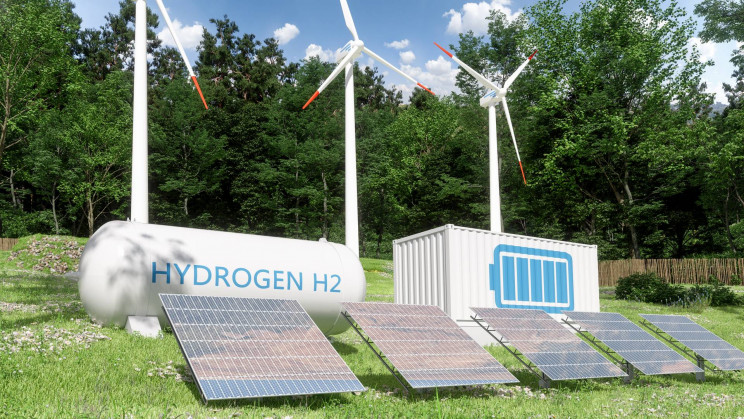The production of solar hydrogen is a renewable energy system with huge potential for global sustainability initiatives. But, unfortunately, it is impracticable because of the high production and operating expenses.
Scientists at the U.S. Department of Energy’s (DOE) National Renewable Energy Laboratory (NREL) recently set a new record for the highest efficiency in solar hydrogen production. The team obtained an efficiency of more than 20% in solar-to-hydrogen conversion.
In 2015 the previous record had an efficiency of 14 percent by an international team of researchers from Helmholtz-Zentrum Berlin, TU Ilmenau, Fraunhofer ISE and the California Institute of Technology.
The researchers combined tandem solar cells with low-cost catalyst materials to electrolyze water and split it into hydrogen and oxygen.
Dr Siva Karuturi of Australian National University, one of the study’s co-authors, told RenewEconomy that his team’s unique approach, which combines solar panels and hydrogen electrolyzers to one unit, may lead to large production efficiency increases and cost savings.
“In a centralized electrolyzer which usually runs on grid electricity, membrane and electrodes are stacked in multiple numbers – often hundreds of them – to achieve the desired production capacity which results in a complex system,” Karuturi said.
In direct photovoltaic (PV)-electrolysis, a single unit of electrodes and membrane can be directly combined with PV cells to create a simplified solar hydrogen module, eliminating the need for power infrastructure and electrolyzers and resulting in higher power conversion efficiency and lower costs, according to Karuturi.
These innovative designs could lower the cost of generating renewable hydrogen down to $2.30 per kilogramme. That would correspond to the objectives of the U.S. Department of Energy.
It’s good news as the world attempts to achieve net-zero emissions by 2050, a target that has brought up several initiatives for green hydrogen. Another energy breakthrough in 2017 was the utilization of a floating solar rig to manufacture hydrogen fuel from saltwater. But this is still an expensive technology.

